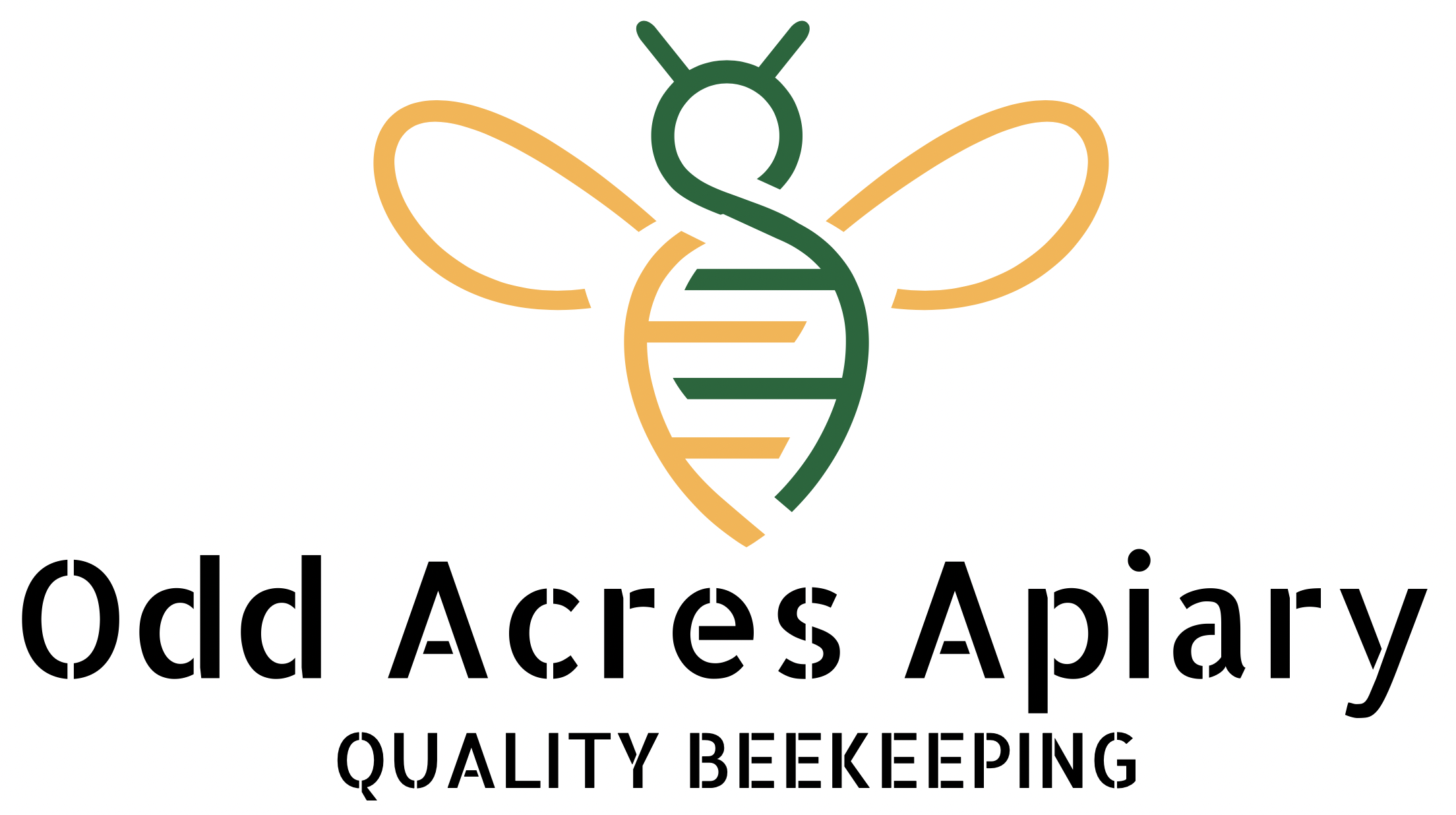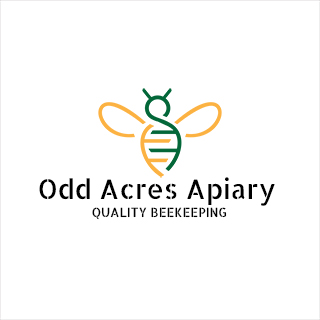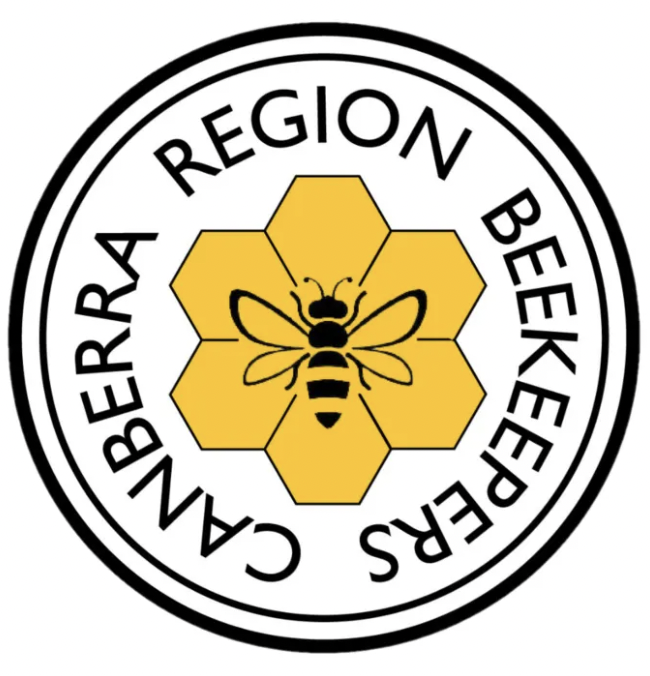
Re-Queening – Canberra Region Beekeepers
We are affiliated with the Canberra Region Beekeepers. Recently, we supported the re-queening of their club apiary.
Why Re-Queen
Whether to re-queen honey bee colonies is nearly always a point of contention; this need not be the case. Instead, why not ask: ‘Why do you keep bees?’
I am certainly of the view that it is important to re-queen and to do so often. Yet we all concede there are valid reasons, costs and effort aside, for not doing so.
Wild or feral bees rarely provide a surplus except to scrape through times of dearth (aka winter) and generally choose a nest cavity size of around 40 litres. They store just sufficient honey and pollen and – if spring conditions are propitious – reproductively swarm. Some keepers of bees simply enjoy trying to replicate these evolved traits: their keepers let their bees do their own thing. However, the disposition of most beekeepers is to make a living or to at least produce enough honey to supply the larder and to avoid nuisance swarming.
But where does the backyard beekeeper, interested in bees and keen to get more than a few frames of honey, fit in?
In my limited observation, most apiarists want to keep healthy productive bees. Any serious keeper realises a colony that has done exceptionally will crash if the queen turns to perform indifferently. A salutary tale may not change your style of keeping bees but it surely is instructive:
Canberra Region Beekeepers once had a colony headed by a Carniolan queen whose performance exceeded all expectations. In the next season the same queen had laid out nearly two full supers by mid spring – brood in 18 frames – and we were expecting it to produce another bumper crop. That dream soon evaporated.
Supersedure cells appeared and the amount of brood dropped precipitously. Two attempts to remove those cells and revive the spirits of the colony failed miserably. The old queen limped along until it was resignedly left alone and was replaced by a daughter queen. By then it was too late in the season for the colony to be in any measure productive.
What could we have otherwise done? We might have allowed the bees to follow their instincts, allowed them to immediately supersede their old queen and then go on to produce another way above average crop. Alternatively, we might have requeened the hive and been more assured of surplus honey. We had a choice. Making the right choice is the essence of good beekeeping. Opinions differ.
That was Wednesday the 13th of March.
Selecting Queen Stock
Enter left field Peter Czeti. Peter is part of The Australian Queen Breeders’ Association (AQBBA), a group presently intent on breeding not only for gentleness and productive bees but that are also mite and disease resistance.
Peter has a queen mating apiary adjacent to the picturesque Numerella River on the edge of the Monaro (Figure 1). To this location fellow beekeepers John Creasey and Alan Wade were invited:
Our mission was to capture queens selected from a screening program to re-queen the club apiary. This screening program is part of the work being done by members of the AQBBA using a test called Unhealthy Brood Odour (UBeeO). UBeeO is an experimental test that will shortly be released commercially in the United States. About 500 productive colonies from commercial operations in New South Wales and Queensland were screened. Ten colonies that performed well in the test were selected and their progeny distributed to the participants for further breeding and start the long journey of having bees that are hardy in the face of Varroa. A selection of these bees are now in our apiary and will be assessed for hygiene, temperament and productivity in the coming season.
Parent colonies had been selected for their capacity to uncap and remove larvae afflicted by foulbrood diseases and chalkbrood. The new objective is to breed bees that also recognise mite infected larvae and boot them out of the hive. A noble objective given our bees will shortly be infested with mites.
All queen rearing apiaries share some essential attributes. Superior stock is always at hand from which to graft larvae (to be raised as queens) and to head drone mother colonies. Since queens mate on the wing, likely over a cleared area adjacent to the river where Peter has seen drones congregating, Pete has scattered drone producing colonies over a range of several square kilometres to improve the chances of good matings. For the same reason he has also supplied good queens to local beekeepers within flying distance of his mating apiary.
Strong hives are also needed to build queen cells, still more small colonies (tiny mating nucs) to introduce ripe queen cells to. Yet more strong colonies are needed to store mated queens – queens in cages above a queen excluder placed on top of hives. Together these are the backbone of this out-apiary.
The pictures (Figures 2 and 3) tell the story. The mini nucs (Figure 2) are strapped to shelves attached to trees to avoid disturbance by ants and feral pigs.
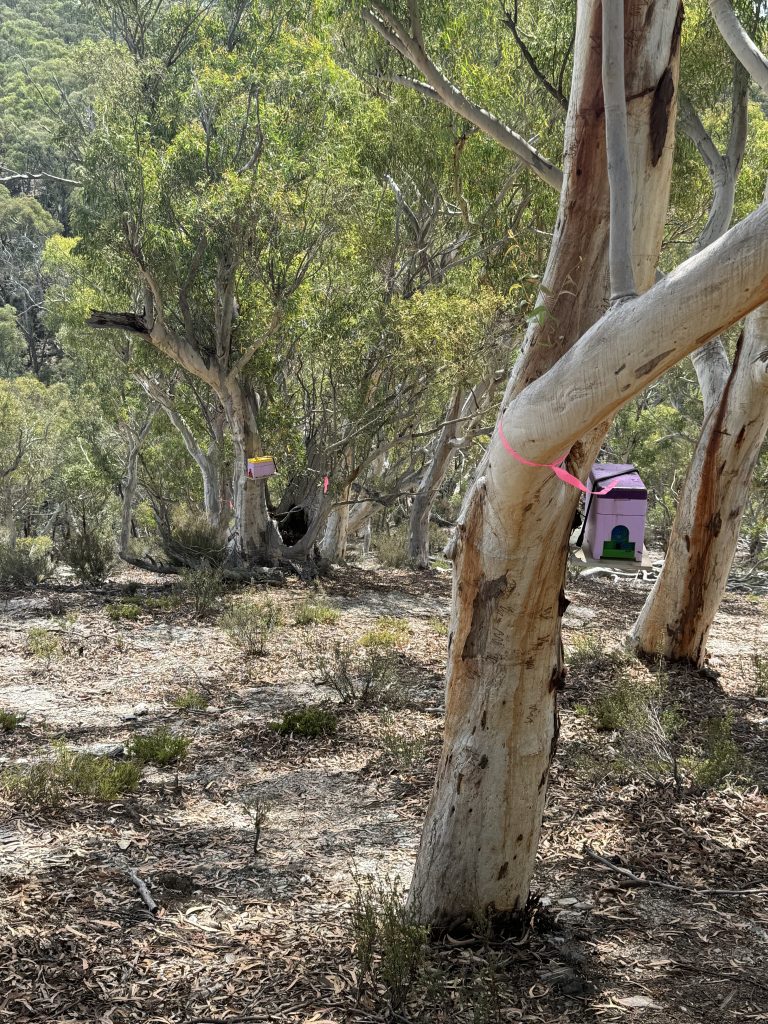
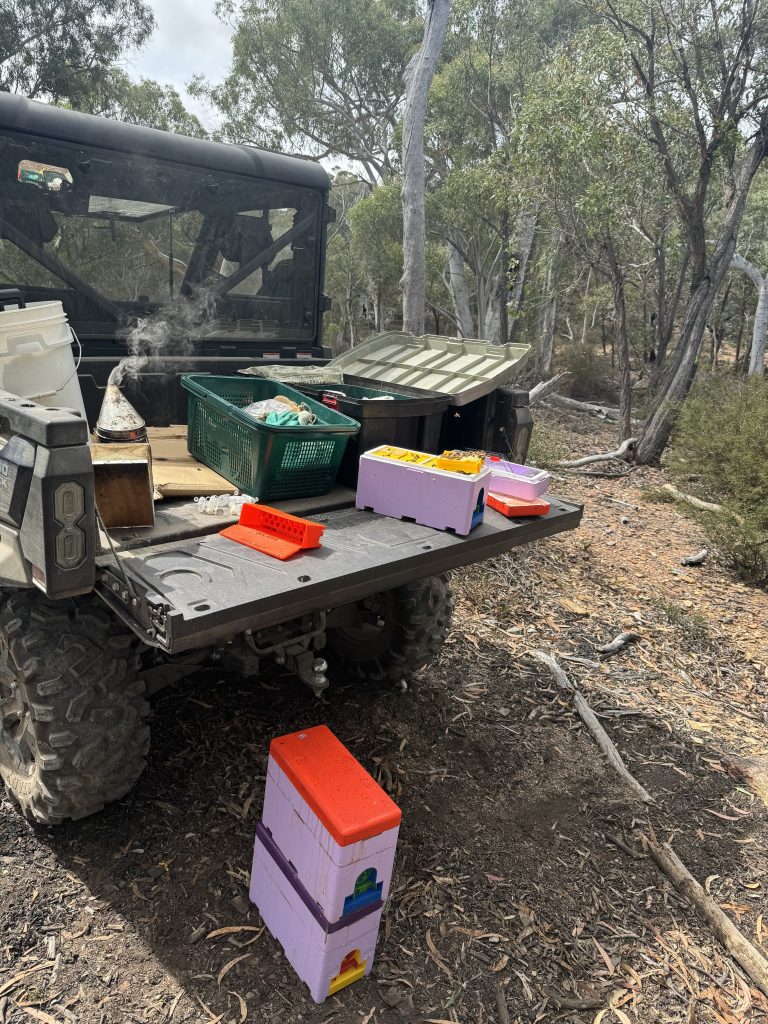
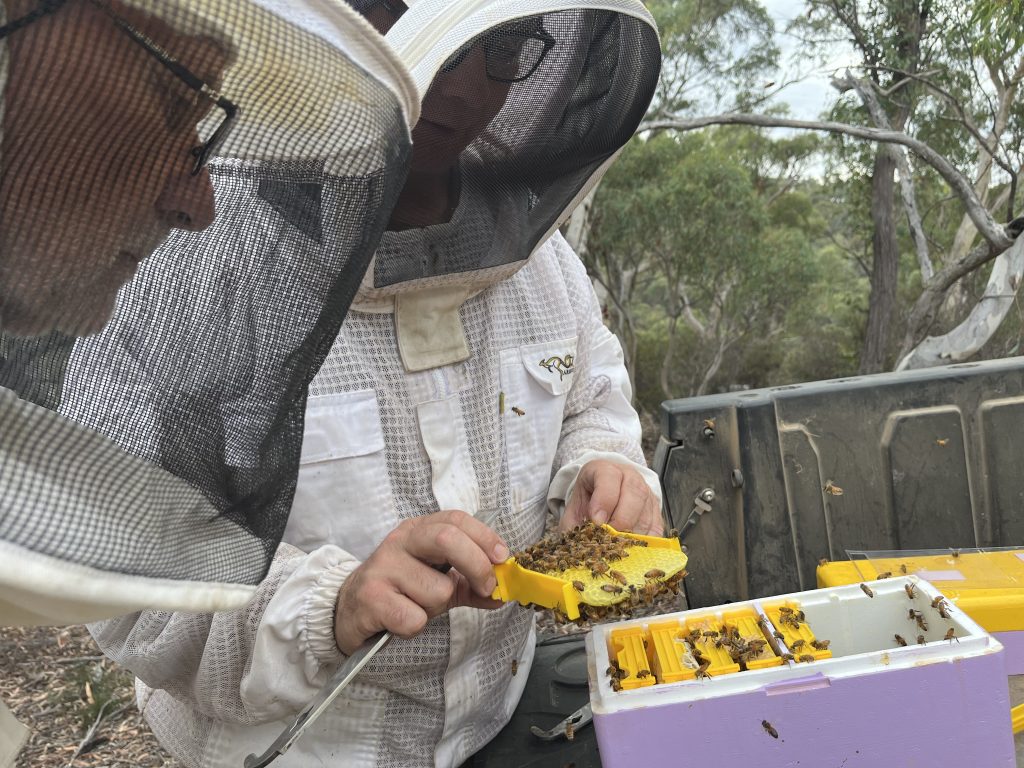
Figure 2: Finding queens in mating nucs in foothills adjacent to the river:
(a) mating nucs on tree shelves removed from ants and pigs,
(b) nucs collected and stacked in truck; and
(c) finding queens.
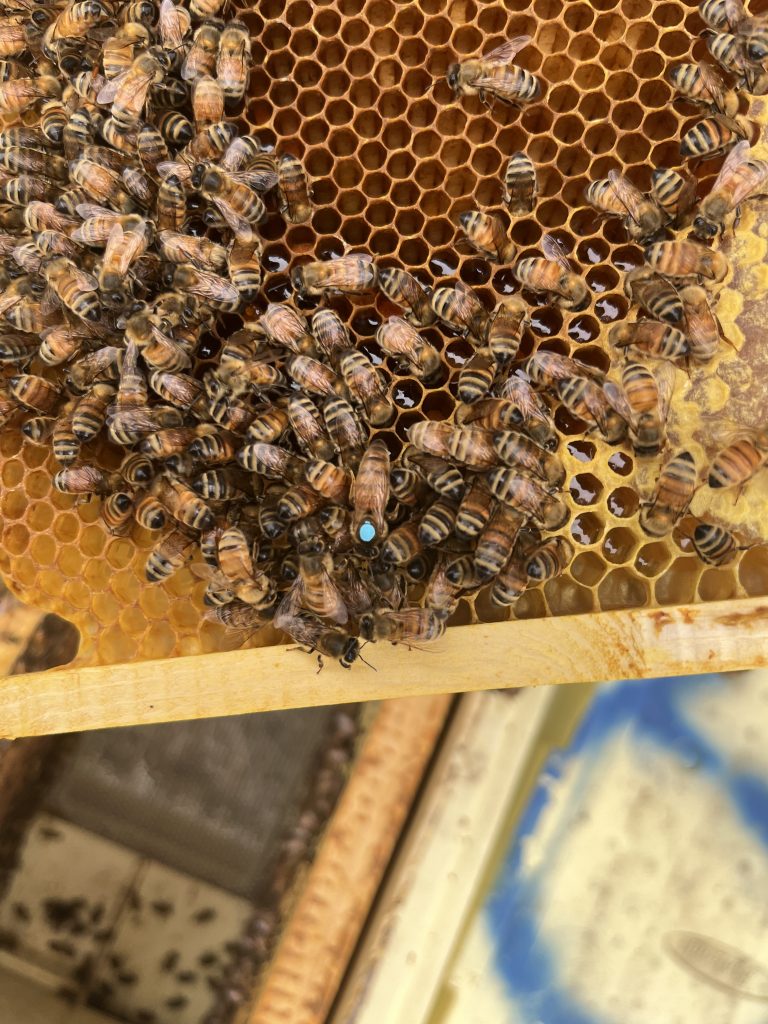
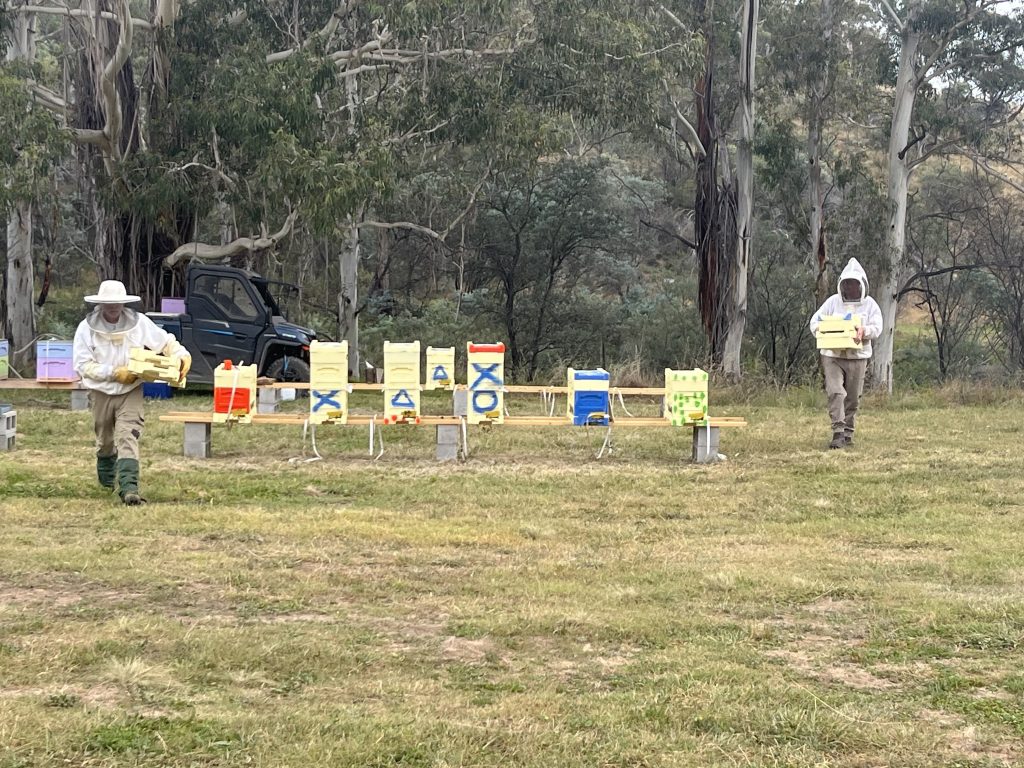
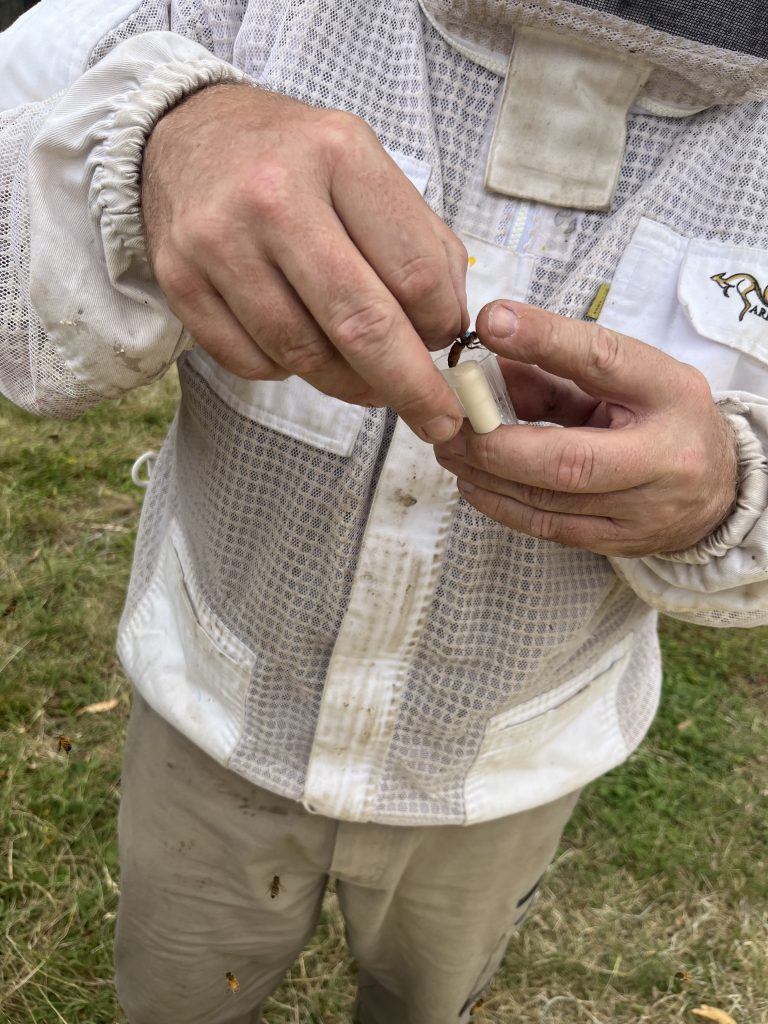
Figure 3: Finding queens in 2×3 F nucs mated and stored in the main apiary
(a) locating queens;
(b) capturing queens in double nucs stored above nurse colonies; and
(c) caging queens.
Jerrabomberra Re-Queening Day
On Saturday, the 16th of March, about thirty enthusiastic club members descended on the Jerrabomberra Wetlands apiary (Figure 4) to prepare and install eight high-performance queens (seven blue dot UBeeO selected queens and one yellow dot high-performance queen). An instructive re-queening exercise for all!
Two techniques were demonstrated. The first was the traditional find and dispose of old queen routine that precedes introducing a new queen. It relies on the emergency queen replacement instinct where bees, as soon as they have lost their monarch, set about raising their own replacement queen. By sleight of hand, and instead, you immediately supply a new queen. We also frame fed the colonies with sugar syrup to simulate a flow known to improve the chances of queen acceptance.
Wild or unmanaged bees replace their queen by either swarming (a new queen is installed as the swarm takes off with mum) or (when she gets old or disease ridden) by supersedure. However, if a colony in a hollow tree loses its queen – say when the hive is raided, or a bee-tree falls over – the bees set too and raise a newbie. There are reports of swarms taking over hives and replacing the resident queen, common in southern Africa, but that is another story.
days the new queen escapes her introduction cage and starts laying. The temperament of the colony improves markedly – sometimes immediately – and after three weeks her progeny will begin to emerge. By around week six nearly all the old stock will have perished and an invigorated colony, comprising nearly 100% new queen progeny, will romp away. It will have both young workers and maturing drones.
The other technique Peter demonstrated is one of the ‘smarts of requeening practice’. Where the old queen is not quickly found, bees are shaken into the lower brood box: nearly all colonies to be requeened were doubles.
Colonies were turned around so that the bottom box originally pointing north now faced south. An excluder is added and the remaining brood and stores – freed of bees – are placed on top of the excluder. A few hours later, when many worker bees have filtered up through the excluder, the excluder is replaced by a double fine wire screen to spit the colony, a lower colony with the old queen and a separate upper queenless colony sharing some of the warmth of the hive below. A caged queen is introduced to the upper, now queenless colony later in the day.
Second Field Day
The following Saturday, the 23rd of March, a hardy bunch of nine moved in to do the final check, again feed the bees, this time to augment winter stores. All eight queens took. There was, however a remaining task. Colonies where the queen had not been found the previous Saturday were locked below double screens. They with a much reduced population were easily found and removed. The colonies were then reunited to complete requeening. As a departing surprise we dealt with some anomalies
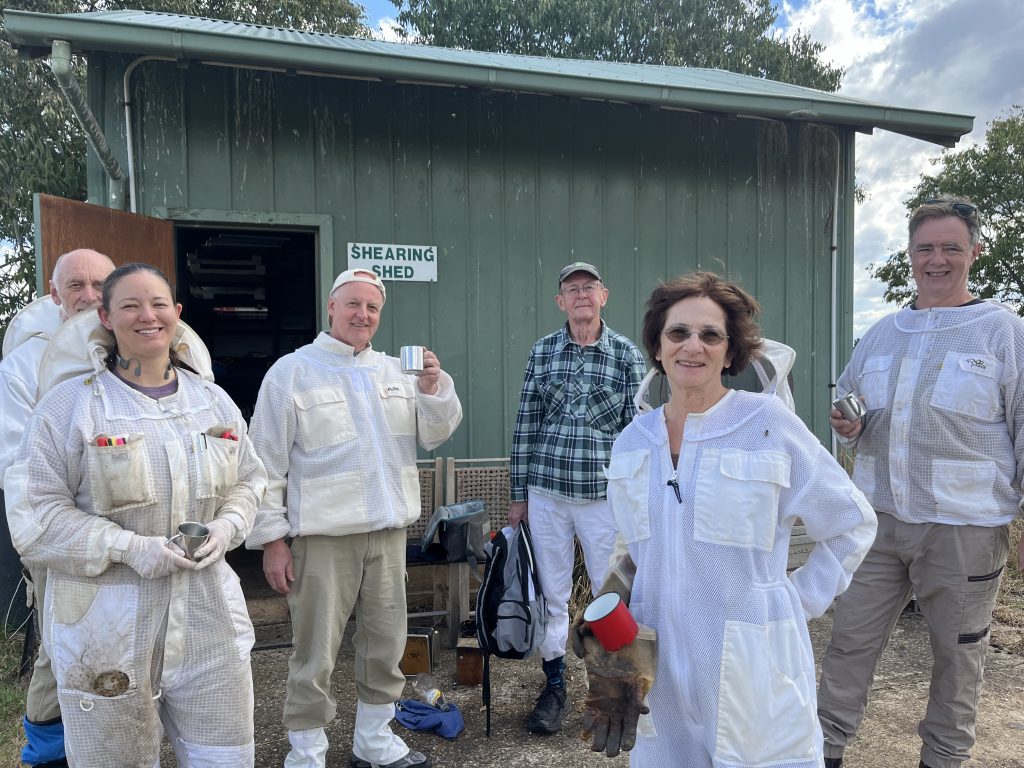
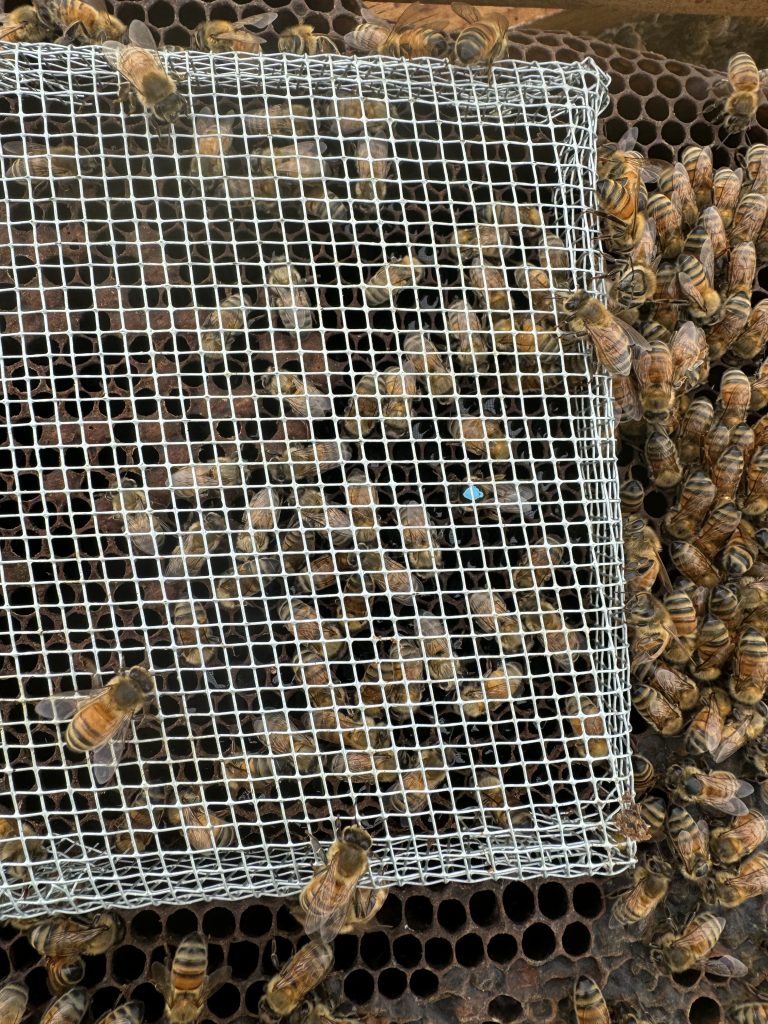
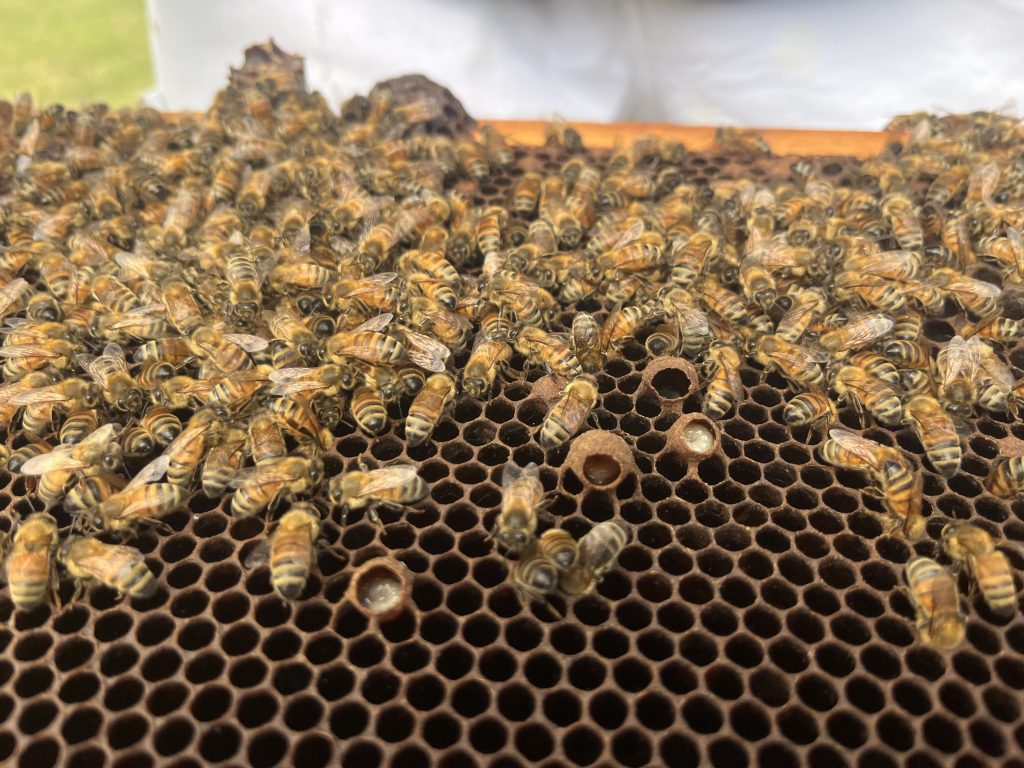
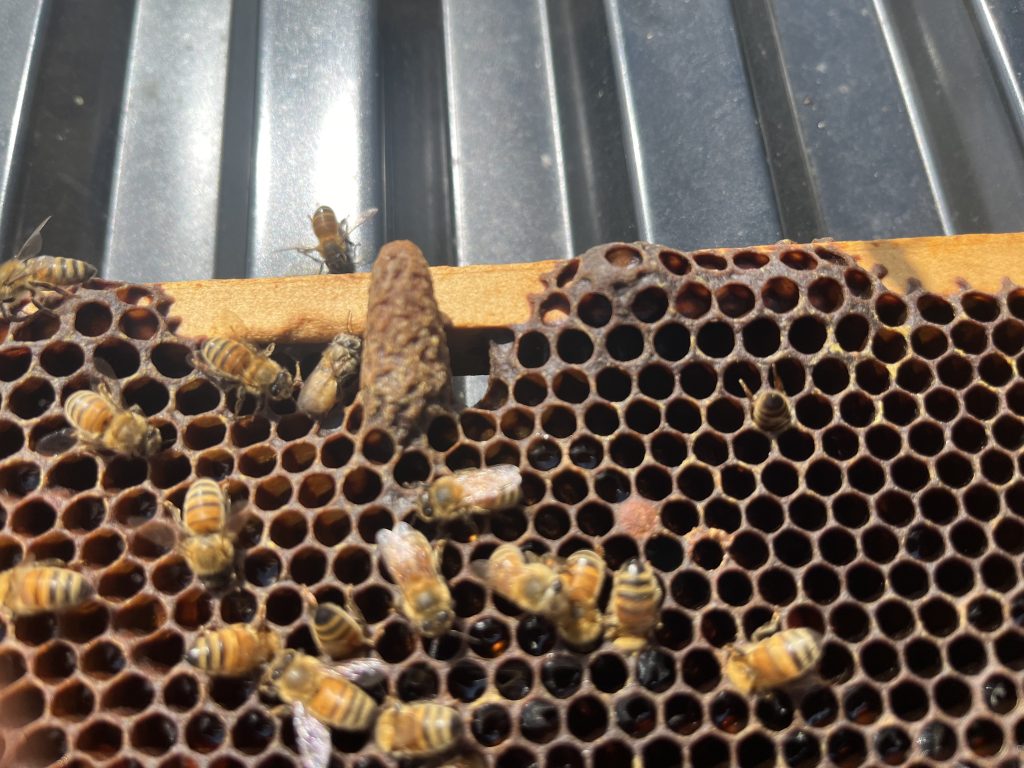
Anomalies of requeening at day 7:
(a) normal queen acceptance:
(b) emergency queen cells started in split colony (old queen probably accidentally killed) – queen accepted in upper split colony;
(c) supersedure cell developed in colony with temporarily caged queen – cell removed when new queen was found.
And Next
On behalf of the club, Jen Greenham thanked Peter for gifting the club queens.
By most reckoning the future of the apiary is more assured. We should have healthier, more tractable and more productive bees. More particularly it will be interesting to see how the other Langstroth hives – all intended for sacrifice to make up spare nucs next spring – fare over winter relative to those hives that have not been requeened.
Special thanks to John Creasey for all his help on the day.
Alan Wade, a member of the Canberra Regions Beekeepers, wrote the article for the Club’s April 2024 Newsletter. It is reproduced with permission.
